Solo
PY 1142 (as of 2023)
Fleet Captain: Ian Burns
(Solo 4311)
Class association: www.solosailing.org.uk
 |
The Solo
dinghy is a classic, one-design single-handed dinghy.
Designed by Jack
Holt in 1956, the Solo is the main
single-handed
dinghy at Middle Nene Sailing Club.
The Solo dinghy is perfectly suited for our lake,
offering a lively performance.
Originally designed in wood,
competitive boats are now more widely available in
Foam Reinforced Plastic (FRP) or composite construction
(FRP Hull and Wooden Deck). It can
be sailed competitively by helms between nine to sixteen stone,
with good headroom clearance below the boom.
There is a good second-hand market for Solo dinghies, but keep
an eye out for the boat's condition. Wooden boats should be
thoroughly checked for rot. In addition to buying second-hand
Solos, they are also available as a kit, part-built or complete.
|
|
ILCA / Laser 1
PY Numbers (as of 2023):
ILCA 7 / Laser 1101
ILCA 6 / Laser Radial 1150
ILCA 4 / Laser 4.7 1210
Class association: ilca.uk
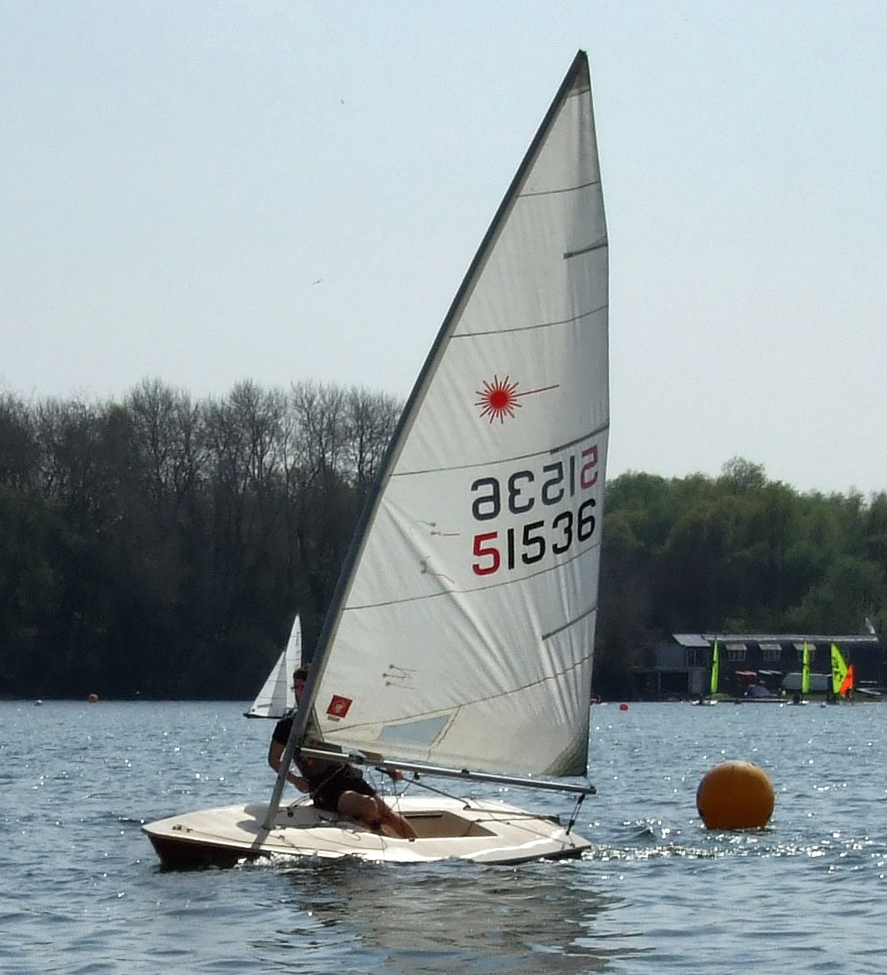 |
The ILCA is a single-handed racing dinghy. Each dinghy is virtually identical whether they are brand new or 10 years old,
meaning that the sailor wins the race, not the boat. The ILCA is a challenging boat that rewards athleticism, subtle steering
and trimming techniques, as well as tactical excellence. It is a singlehanded Olympic class boat for both men and women and is
sailed at the club, national and international levels. With over 200,000 boats in 140 countries, it is
the world’s most popular adult and youth racing sailboat.
|
|
RS 200
PY 1046 (as of 2023)
Fleet Captain: Mark Hatsell
(RS 200 1517)
Class association: www.rs200sailing.org
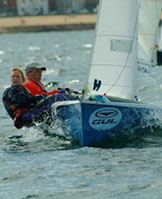
|
Adrenaline packed racing and a full-on social scene.
The RS200 is one of the most popular two person sailboats of today. Perfect for
moderate weight teams, it’s a winner with mixed crews, young sailors and family
teams – at clubs, championships and on the RS Racing Circuit. Strict one-design
rules keep the competition tight and the budget in control. So it’s all about
exciting sailing and a good time ashore in the RS community. This class attracts
rock stars and newbies like almost no other.
An open transom allows the RS200 to virtually self drain after a
capsize and a moulded self bailer quickly removes any remaining
water. It features an asymmetric spinnaker with a single line hoisting
system which is very easy to use.
Decent competitive second hand boats can be bought for about
£3,500. RS200s – like many of the RS range – hold their value
extremely well.
|
| |
|
Flying Fifteen
PY Numbers (as of 2023):
Classic 1041 (TBC)
Silver 1026 (TBC)
Gold 1015 (TBC)
Fleet Captain: Neil Bartholomey
(Flying Fifteen 3873)
Class association: www.flying15.org.uk
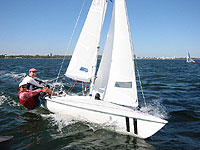
|
The Flying Fifteen (Flying 15) is a
twenty foot long double-handed keelboat. It is suited to a wide
range of crew weights, and can easily be sailed by mixed crews.
It was designed by Uffa Fox in 1947. The design has changed
little over the years, but the rig and materials used have.
As the class has developed, the older boats have become less
competitive against the newer boats in stronger winds so two
"sub-fleets" have been created, the Classics and the Silvers.
Classics are Fifteens with sail numbers of 2700 and below, but
in addition boats built by Copland, Shepherd and Wyche & Coppock
with sail numbers over 2700 are also eligible for Classic
status.
The Silvers are boats with sail numbers in the range 2701 - 3200
(which are not Classics). These limits were chosen as they mark
the introduction of the Windebank IV and Windebank IX designs,
both of which showed significant improvements in performance on
previous designs.
From 2015 MNSC accepts Flying Fifteen boats up to and including sail
number 3400. This means that the club is now open to the
'Classic' and 'Silver' fleets of the class.
|
Illusion
PY 1347 (as of 2023)
Fleet Captain: Wilf Kunze
(Illusion 108)
Class association: www.illusionclass.org
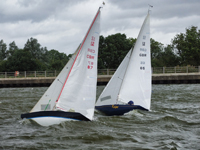
|
The Illusion is a
one-design single-handed keelboat – based on a scaled-down version of
Lionheart, the British 12 Metre Class yacht – and designed by Jo
Richards and Neil Graham in 1981. These peformance single-handed
boats offer superb racing in nearly any conditions, by sailors
of all weights and ages.
Boats are equipped with a standard main, roller furling genoa,
and spinnaker, plus running rigging.
In the Illusion, the skipper sits above the 160kg
keel, feet resting on the steering bar, leaving both hands free
to control the sails. Sheets, guys, genoa furling and other sail
controls are conventional. Bodyweight is no problem! With the
aid of corrector weights, skippers can sail at a set bodyweight
of 100kg or more, providing close racing in all conditions. The Illusion
has four separate buoyancy tanks and a manual bilge pump. An
electric bilge pump can also be fitted for convenience.
LOA: 3.70m/12' - Beam: 0.85m/33" - Draft: 0.69m/27" - Mainsail:
3.4sqm/34sqft - Genoa: 3sqm/30sqft - Spinnaker: 4.5sqm/45sqft -
Racing weight: 320kgs incl. skipper
|
Menagerie
Fleet Captain: Roger Lewis
Image Coming Soon... |
Content added soon... |
Enterprise
PY 1119

|
The
Enterprise dinghy is a two person, non trapeze, non spinnaker
one design double chine hull dinghy. Designed by Jack Holt in
1956, the design has withstood the test of time and the class
provides some of the best sailing and racing to be found
anywhere. Over 20,000 are registered worldwide. It has exellent
qualities both as a cruising and two-person racing boat. The
Enterprise dinghy is also very seaworthy and can be sailed
offshore with confidence.
It is a well established class which means that good class
racing and open meeting racing is readily available all over the
country. The National Enterprise Week usually attracts over a
hundred entries. The class is also growing at a rate of
approximately one hundred new boat registrations every year.
Enterprises are constructed using a variety of materials. A
large proportion of new boats are glass fibre with a new style
of interior layout. Alternatives are the composite boat for
those who like wooden decks without the fuss of fitting out a
wooden hull. You can also obtain a conventional all-wooden boat
from one of the specialist builders, or one of the newer
wood/epoxy boats built in a mould and to a simplified internal
design/layout.
Secondhand Enterprise dinghies can be purchased for a couple of
hundred pounds. They are invariably of wooden construction and
care must be taken when buying one that needs a lot of work.
Class association: http://www.sailenterprise.co.uk/
|
RS Vareo
PY 1093
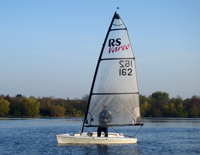 |
The RS Vareo
is a spinnaker powered single-hander that brings exciting
performance within reach for all sailors – and even offers space
for an occasional crew. The stable hull, responsive rig and easy
handling systems make the RS Vareo an attainable challenge,
while two mainsail size options allow the relative novice to cut
their teeth and expand the boat in line with growing experience.
If you are looking for a small boat that can help build the
skills for performance sailing, or if you are looking for a
family boat that you can also race competitively, the RS Vareo
is an excellent choice.
Designer Phil Morrison - Length 4.25m (14') - Beam 1.57m (5'2")
- Hull weight 68kg (155lb) -
Sailing weight 93kg (205lb) - Mylar sail 8.8m2 (94sqft) - Dacron
sail 8m2 (85sqft) - Mylar "Storm" sail 7.2m2 (78sqft) -
Spinnaker 10m2 (108sqft)
Class association: www.rsvareo.org
|
RS2000
(From 1998 to 2012 the 2000 was known/built as the Laser 2000)
PY Number: 1112 (RYA 2019)
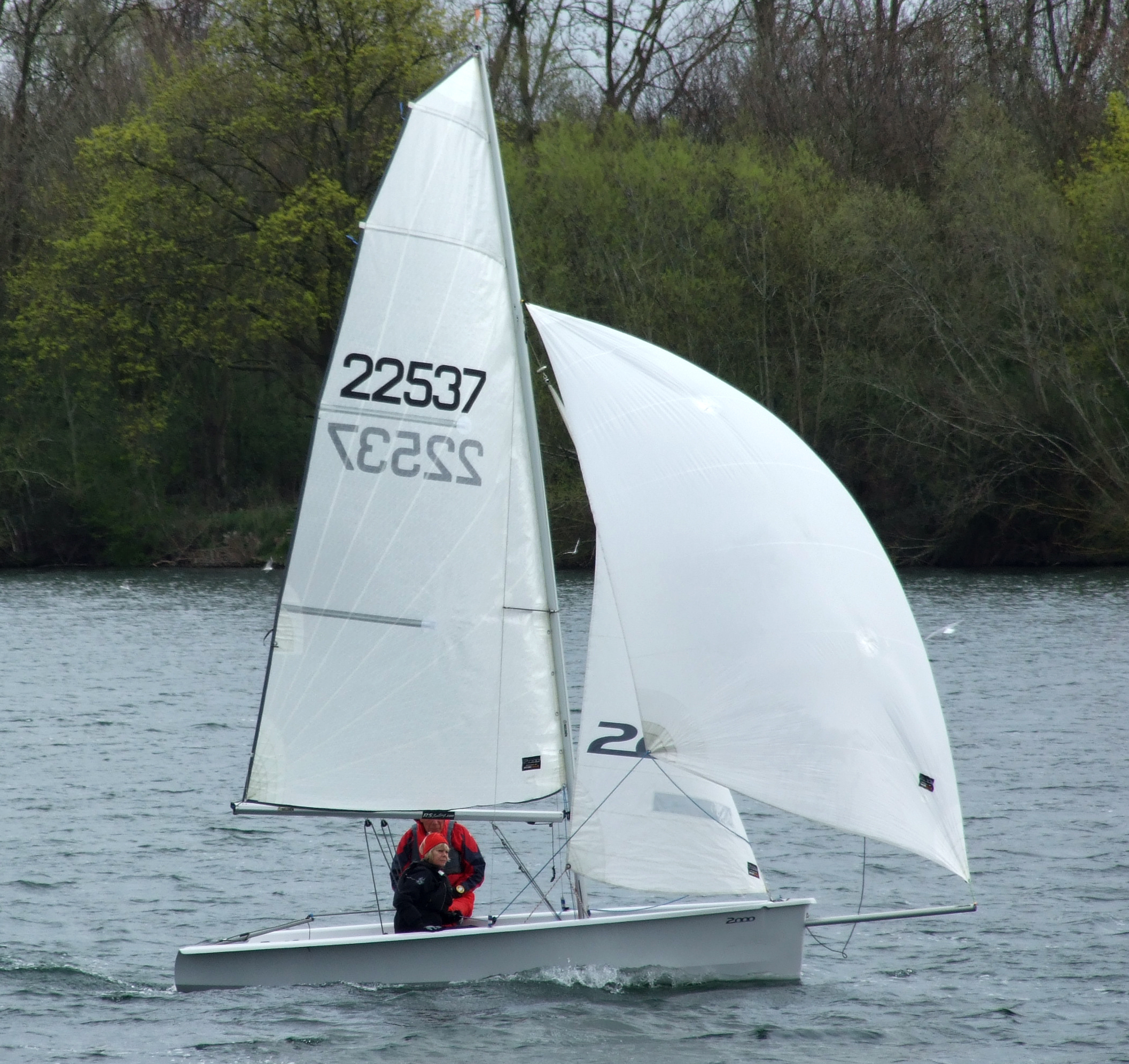 |
The RS2000 is a one-design class combining a
traditional GRP hull and foam sandwich deck moulding with a
modern asymmetric rig including a furling jib, reefing mainsail
and single line gennaker hoist system.
A high boom provides plenty of headroom whilst the self-draining
cockpit keeps the crew dry and drains quickly should the boat
capsize.
The 2000 has established an enviable record as a resilient and
versatile design; docile and forgiving for novices yet an
exhilarating sail for more advanced sailors.
Since its introduction in 1998 more than 2,350 boats have been
built.
Dimensions:
Length: 4.44m
Beam: 1.77m
Mast Height: 6.27m
Sail Areas
Mainsail: 8.66m²
Jib: 3.04m²
Gennaker: 10.12m²
Weights
Hull: 128.5kg ± 1.5kg
(The Laser 2000 was initially marketed with an incorrect hull
weight of 100kg; this was changed to 140kg in 2008)
Unladen: 151kg ± 1.5kg
Trolley: 35kg
Road Base: 90kg
Construction Material: GRP
Designer: Phil Morrison in 1998
Manufacturer: LDC Sailing
Class association: www.2000class.org |
| |
|







